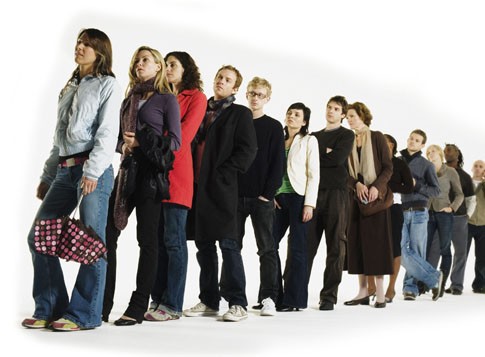If I Had Only Picked The Other Line…

By Merry Morris
Yes, you did it again.
Even after careful scrutiny of all the lines in the store, you’ve picked one that is moving at glacial speed. You wisely avoided the line with the kid holding the bag of coins, but he’s long gone and here YOU stand. You just can’t win.
Well, you are right. You can’t win. You might get lucky sometimes, but that’s all you can hope for.
The Math Is Against You
With several lines to choose from in a store, the odds are against you picking the fastest line. There are even mathematical equations to support that, and the odds that the store or service provider will always have enough cashier space and employees to ensure short lines even for those big sales are probably nil. At some level you understand this logically, but, deep down inside, you think you are smarter or more observant than other shoppers and should be able to choose the best line.
Is this torture avoidable? Increasingly crowd managers are choosing the “serpentine” approach where customers stand in one line and each is dispatched to the next available cashier once they achieve the front of the line. So, at least the lady with the coupons is slowing everyone down a little bit, rather than just those people in her line.
This approach involves what mathematicians refer to as “queuing theory,” which sets forth why you can’t always be in the fastest line. The serpentine line is now found in a variety of places that people find themselves waiting: amusement parks, banks, retail stores, customer service queues (though that is behind the scenes). Those snaking lines have been found to reduce wait times substantially.
Queuing theory has become very important in today’s hustle-and-bustle, crowded society. So, problem solved? Nope. People can be ornery and, most don’t like spending time in serpentine lines that make you feel like you are part of a disorderly mass of people. No longer are you on your own and in control — you are captive in a sea of other victims.
But Why Does The Wait Seem So Long?
There are factors that make our queuing times bearable or excruciating. Here are a few.
- Unoccupied time – hope you didn’t leave your SmartPhone in the car!
- Anxiety – will you miss a flight or other deadline during the wait?
- Uncertain, unfair or unexplained waits – if you only knew what the hold-up was!
- Being by yourself – idle chit-chat with friends helps!
- Not to mention, the item you’re waiting for – waits for valuable items are more bearable. That loaf of bread is just not worth the wait, but the filet mignon…
Extension Questions
- “Timely” Activity – Check time intervals in different situations, like during tests, lunch breaks, fire drills. Does five minutes seem longer or shorter during that math test?
- Discuss the equation: S = P – E where “S” stands for satisfaction, “P” for perception and “E” for expectation. How might this relate to situations where your expectations are high?
- Investigate queuing theory — how might it be applied in your school?
